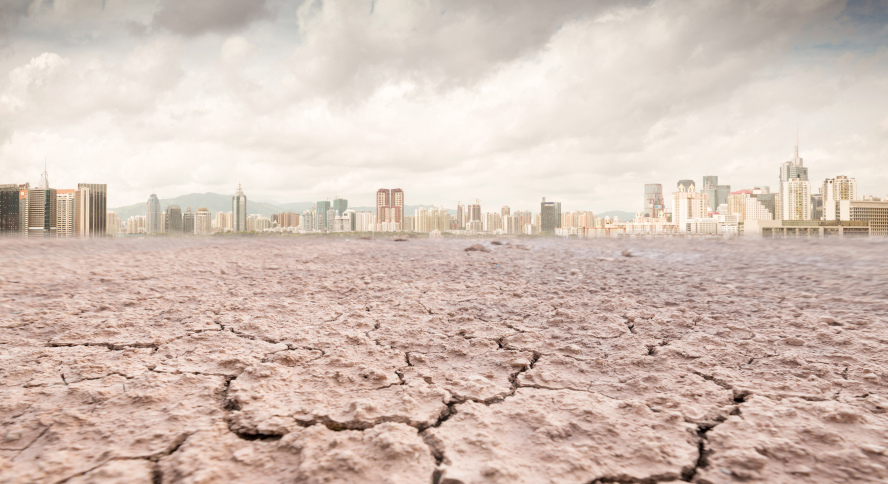City policymakers increasingly understand that, in the face of a changing climate, doing nothing isn’t an option.
That’s the overarching message from our Climate Resilient Cities Index, which looks at the preparedness of major urban centres around the world for the climate-related challenges they face today and those they’re likely to face in future.
The background is well known. Since 2000, extreme climate-related events have been happening with alarming regularity. We’ve seen wildfires in California and floods in Dubai. Extreme climate events have become five times more common since the 1970s.
Number of climate related disasters globally since 1900
Source: Savills Research using Our World in Data
Our index focuses on how 23 of the world’s largest, wealthiest and most populous cities are fortifying themselves against climate-related events. These cities attract huge sums in real-estate investment; their ability to do so in future may depend on their resilience to climate-related risks.
Climate change adaptation requires awareness
So what did we find? The good news is that nearly every city in our survey is aware of the risks they face, and nearly all have a plan in place to mitigate these challenges.
This is important. Climate-related risks are not going away. A high percentage of current building stock was not designed with such threats in mind. In the near future, a city’s appeal as a destination for investment will depend to some degree on the extent and effectiveness of its climate-mitigation strategy.
The bad news is the breadth of the threats our cities face. When we talk about water, for instance, we could be talking about river flooding, rising sea levels or access to drinking water. Climate change is a multi-headed monster. It drives extreme rainfall and severe drought – sometimes in the same location.
Wildfires, landslides and hurricanes have always been a threat to some cities, but climate change is making them more frequent and more severe. Some cities are built to withstand extreme heat, but others are having to adapt to it, as scorching summers become the norm.
Climate risks in real estate to 2050
Our index looks at all these climate-related events and projects into the future, to reveal the threats cities will be exposed to by 2050.
We also look specifically at real-estate resilience, including the share of building stock that is resilient, the proportion vulnerable to climate-related hazards and the degree of likely damage escalation up to 2050.
The future view is important because we know that cities can be especially good at dealing with threats they are used to. Tokyo’s world-leading building codes have been refined by a history of earthquakes and tsunamis. Cape Town’s “Day Zero” water conservation scheme followed years of declining rainfall.
Cities are often good at dealing with the now, but less good at preempting what might be around the corner. In a rapidly changing world, they have to do both.
To that end, the index is, to some extent, an education tool – a disseminator of best practice for the real estate industry. If a city is getting hotter, wetter or stormier over the next 20 years, here’s how others have introduced policies and modified their built environments to mitigate that threat.
All to play for
When the index takes all factors into account, Berlin comes out on top, followed by Toronto, Paris and Madrid. All face serious climate threats, but a mix of geographical good fortune (they are all inland with no risk from coastal flooding) and planning mean they are at the lowest risk overall.
But there are no winners and losers here, and the index shouldn’t be used as a league table. If anything, we hope it’s a call to action. All cities face real challenges and most policymakers have acknowledged the threat and begun to address it.
If cities can learn from each other, they can become future-proof, or at least future-prepared. They can develop sustainable building stock designed for a changing climate. As major centres of real-estate investment, it’s essential that they do.
Climate Resilient Cities Index
Source: Savills Research using climate data, UNESCO, UCCRN, ThinkHazard!, CDP, 2023 XDI Gross Domestic Climate Risk
Methodology: Climate Resilient Cities Index
Our index compares 23 of the world’s largest, wealthiest and most populous cities that are particularly important for global real estate investment. It measures each city’s climate risk and the resilience of its real estate to those risks. There are two pillars:
Climate risk considers a city’s current and future climate risk. Current risk measures changes in rainfall and temperature over the past decade, average elevation above sea level, and availability of groundwater. Current risk is also assessed by physical disasters that are exacerbated by climate change; future risks are predicted exposure to extreme heat, sea level rise, coastal flooding and freshwater availability by 2050.
Real estate resilience looks at whether the city, and the country it’s in, has assessed its climate risk, whether it has a plan in place to combat it, and the extent to which the city’s real estate is vulnerable to climate risk. It also measures the city’s share of green certified building stock.



